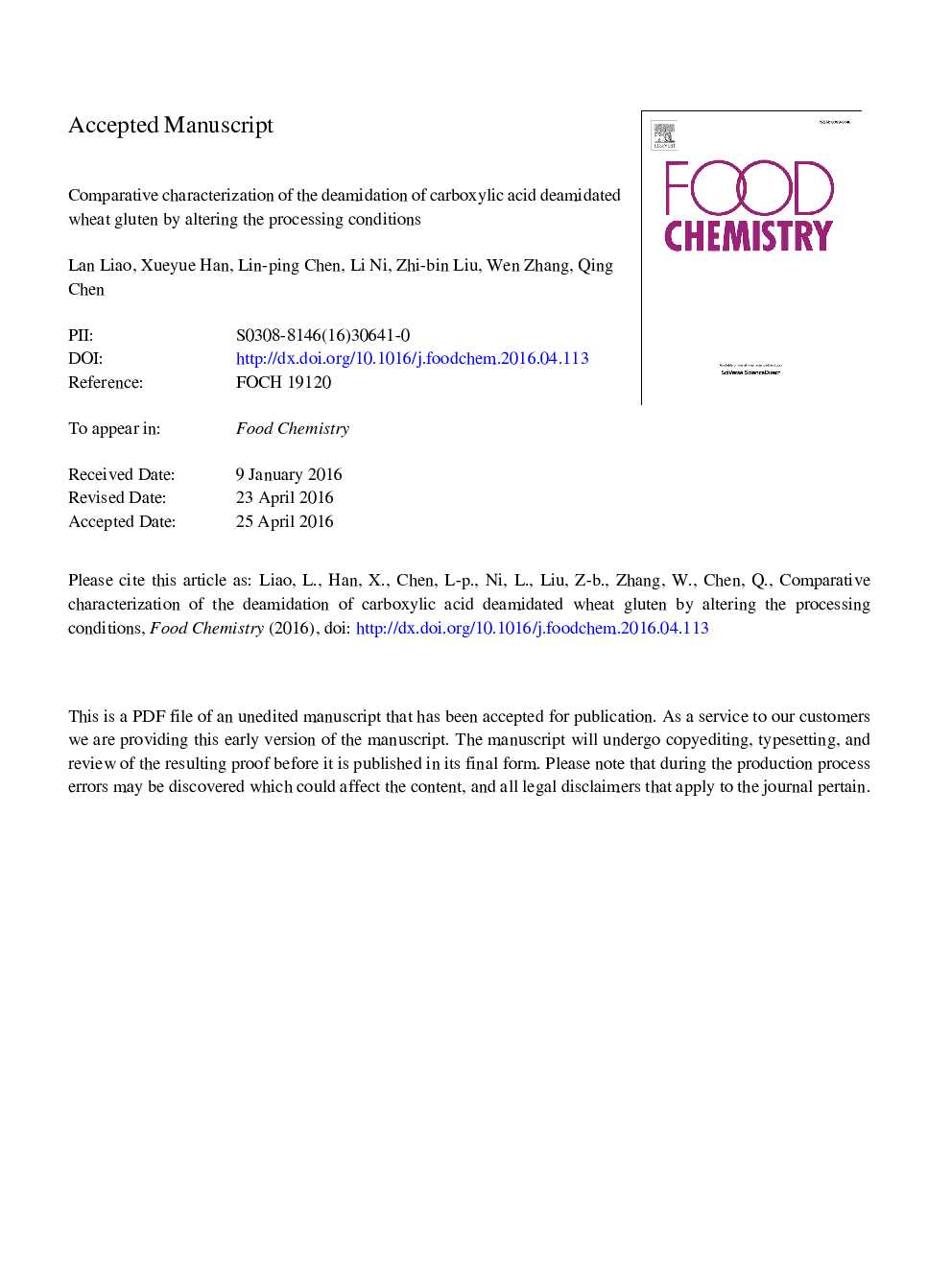| Article ID | Journal | Published Year | Pages | File Type |
|---|---|---|---|---|
| 7588433 | Food Chemistry | 2016 | 44 Pages |
Abstract
The physicochemical, structural and functional properties of citric-acid-deamidated wheat gluten at controlled degrees of deamidation (25%, 40% and 55%), which were obtained by using different acid concentrations (3.93 Ã 10â5, 3.14 Ã 10â3 and 2.36 Ã 10â2 mol/L) and temperatures (70 °C 2 h, 90 °C 1 h and 110 °C 40 min), were compared. Various deamidation processing conditions leading to the same degree of deamidation resulted in proteins with different physicochemical and structural characteristics, as indicted by the degree of hydrolysis, Z-potential, surface hydrophobicity, particle size, SDS-PAGE results, SEC-HPLC results, intrinsic fluorescence and FTIR spectra. Agglomerative hierarchical clustering analysis and principal component analysis qualitatively indicated a significant effect of pH on protein deamidation. Three samples at 40% deamidation, which were produced by a moderate acid concentration, showed the best emulsifying and foaming properties. Processes conducted at greater than 90 °C causing protein aggregation and at a high acid concentration rupturing peptide bonds, impaired protein quality. These findings demonstrated that a limited amount of H+ could function well in the catalysis of the deamidation of amide groups without an excess of H+, which hydrolyses peptide bonds in a stronger hydrothermal treatment.
Related Topics
Physical Sciences and Engineering
Chemistry
Analytical Chemistry
Authors
Lan Liao, Xueyue Han, Lin-ping Chen, Li Ni, Zhi-bin Liu, Wen Zhang, Qing Chen,
